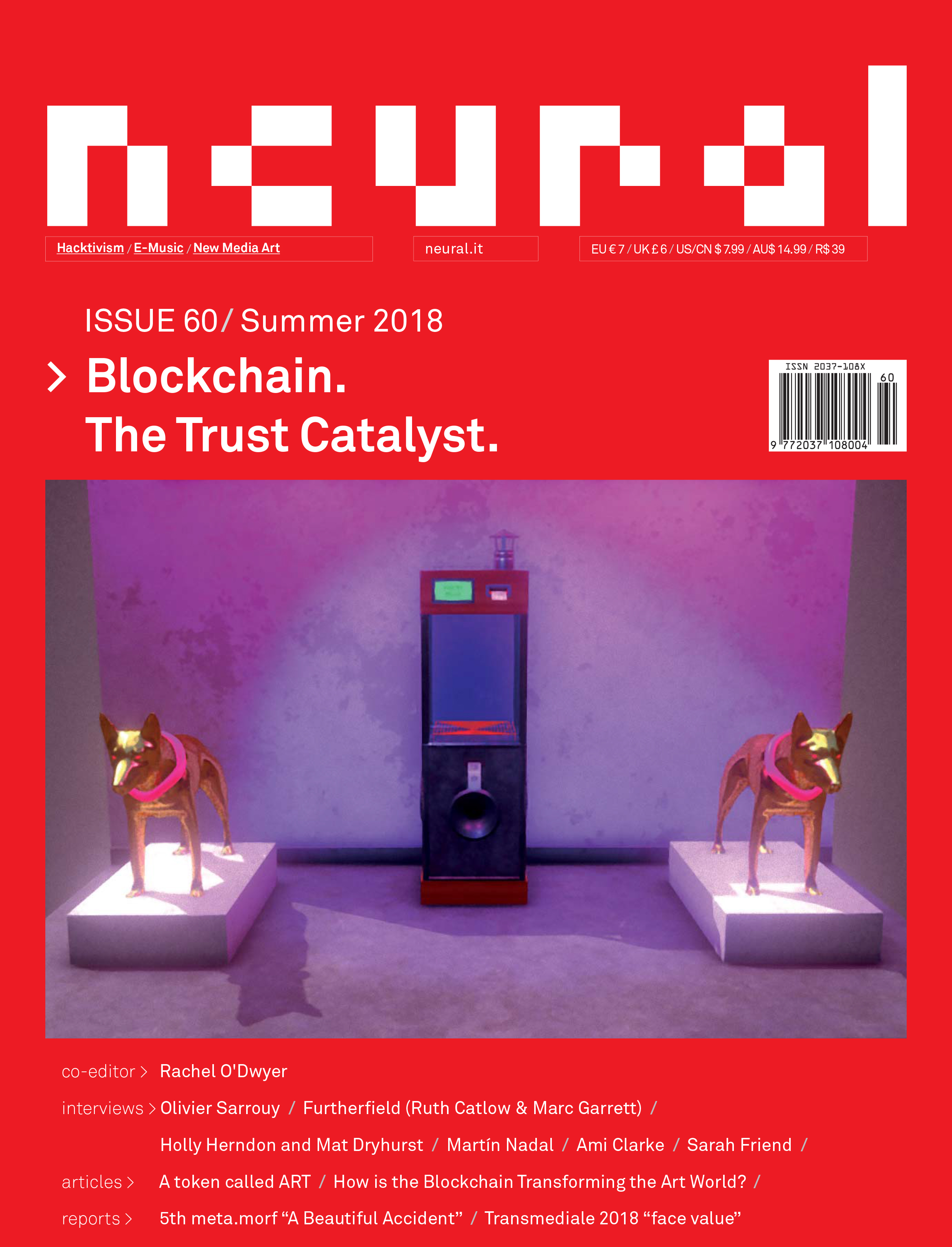Blog
Interviewed for Blockchain. The Trust Catalyst. Neural Issue 60 Summer 2018

Blockchain. The Trust Catalyst. Neural Issue 60 Summer 2018
I have been interviewed with Marc Garrett in a this Summer’s fascinating issue of Neural Blockchain. The Trust Catalyst edited by Rachel O’Dwyer.
Neural: You founded Furtherfield organisation and platform in the second half of 1990s, embracing the first Internet utopia and fostering (digital) collaboration as a fundamental value in art practice. How do you see the relationship between your original undertaking with your current interest for blockchain?
Ruth Catlow and Marc Garrett, Furtherfield: Since 1996 we have explored network technologies to organise, create and take control of art contexts with others. Seeking a less dominated and more hackable artworld (and way of life) [1], we came together with artists, techies and activists, across many disciplines to develop an ethos and set of approaches [2] that we termed DIWO (Do It With Others) [3].This was an update on the DIY spirit of punk, the political interventionism of Situationism, and was inspired by Free and Open Source Software culture, and characterised by remix, appropriation, tactical media antics, and collaborative artistic platform building.
Blockchains have spawned a flurry of production and hype that outstrips even the early days of the web. Their emergence coincides with accelerating global financialisation and the rise of art as a financial asset class, for speculation, hoarding and money laundering. In 2015 Furtherfield launched the Art Data Money programme which set out to explore how blockchains and big data might be used to build a commons for the art in the network age.
This work grew out of conversations with Rob Myers. In his artworks and writing he drew out the historic and political resonances and tensions within and between art and crypto cultures. In 2014 he wrote a provocation called DAOWO- DAO it With Others. This invited us all to think about how DIWO processes might combine with Decentralised Autonomous Organisations to incorporate elements of automated governance into collaborative art production.
You can find the rest of the interview here
We go on to discuss how artists are working with the technologies; the rise of digital collectibles and how blockchains collide with spirit of participative net art “that wants to be free”; other initiatives such as the campaign for the ‘Fair Art Market’ led by DACs in the UK; and impacts on wider global value regimes.
[1] Richard Stallman. Free Software Is Even More Important Now. (no specific date)
[2] Collaboration and Freedom – The World of Free and Open Source Art collection with P2P foundation, Curated by Furtherfield

Recent Comments